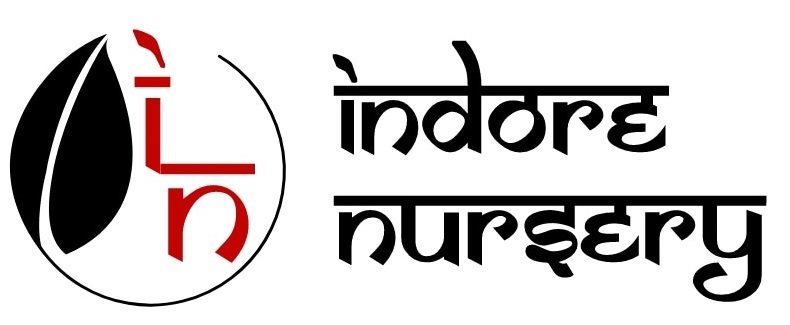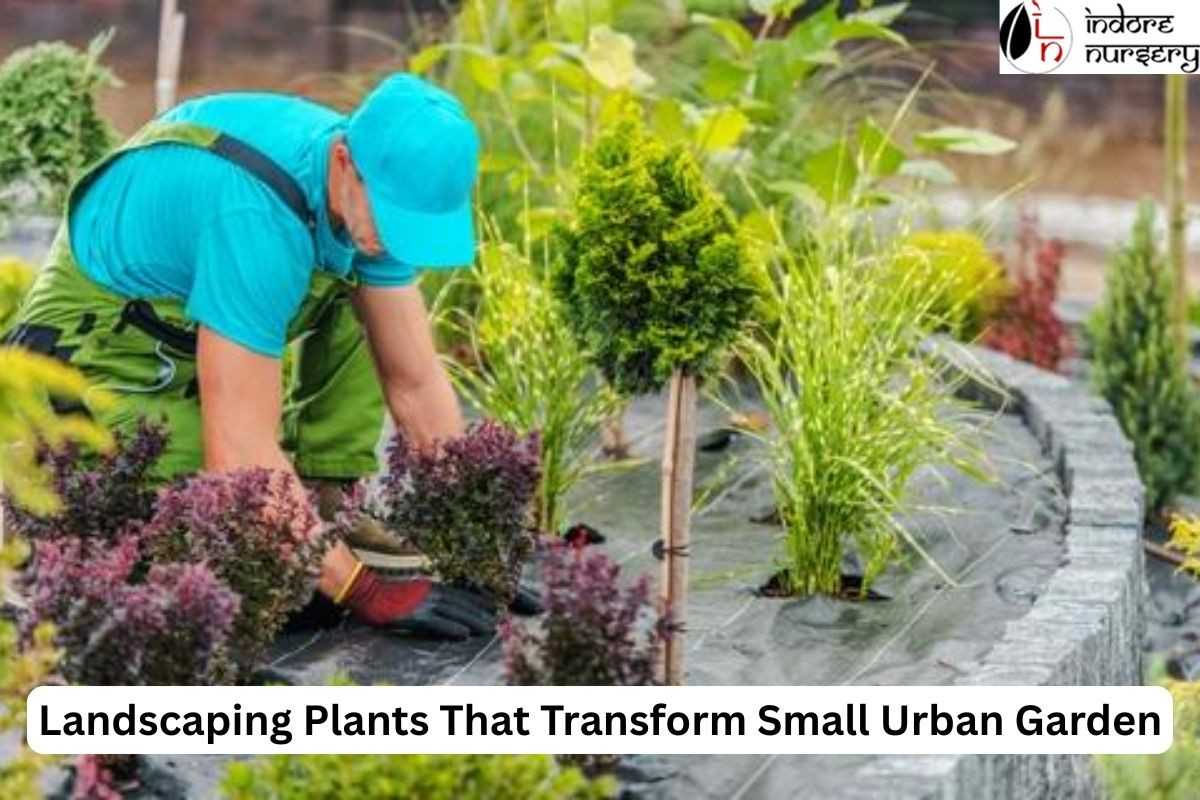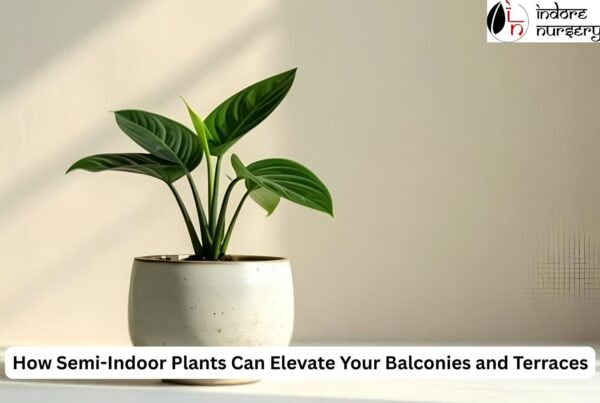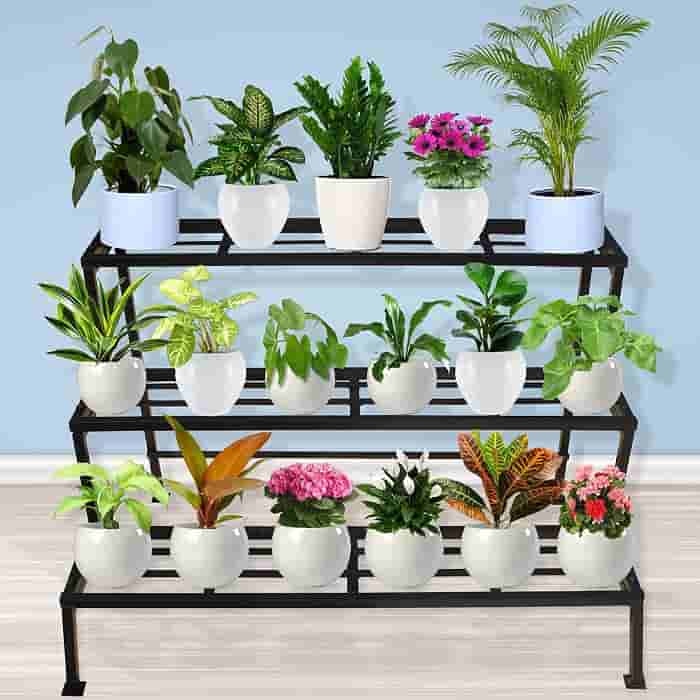Table of Contents
- Why do small urban gardens need smart plant choices?
- Top plant types to use for landscaping plants
- Practical tips for planting and maintenance
- How to source good plants locally for landscaping plants?
- Conclusion
- FAQs
Creating a green oasis in a tight, city-space can feel like a big ask. Yet with the right plants and design, even a small balcony, terrace or patch of land can become a lush, inviting garden. In this blog we’ll explore how to choose the right landscaping plants that transform small urban garden spaces. Along the way we’ll talk about local sourcing options like a “best plant nursery in indore”, so you’re not stuck wondering where to buy healthy plants.
Why do small urban gardens need smart plant choices?

Urban gardens often have some particular drawbacks, such as limited space, shadows from buildings, radiant heat from walls, and poor or unpredictable soil or drainage. Experts say that in a city garden, you are better off selecting plants with structure, good form, and foliage rather than strictly high-maintenance blooms.
For example:
- Plants that grow upwards, rather than outwards, help to maximise space.
- Strong foliage or architectural shapes give year-round interest.
- If the soil is poor or the space is awkward, containers or raised beds help.
Your plant list must be thoughtful and practical because of these very factors. Additionally, sourcing plants from a good supplier matters.
Top plant types to use for landscaping plants
Here are some plant-categories that especially work well in small urban gardens. Use these as a guide and pick out what suits your light conditions, climate, and space.
- Vertical & Climbing Plants
When floor space is tight, go vertical. Climbing plants or vines can cover walls, fences or trellises without eating up precious ground area. According to garden guides:
- Use climbers on walls and fences for height without width.
- Even narrow columnar shrubs can serve as vertical accents.
Some good examples for an urban setting include an evergreen climber that provides foliage throughout the year, or a flowering vine that climbs up a fence. However, these plants help to define the garden and make it seem much larger, not cramped.
- Compact Shrubs & Foliage Plants
Besides flowers, think of plants that provide structure and texture. For small urban gardens:
- Make a dramatic impact with bold-leaved or curiously-shaped plants that don’t require a lot of space.
- Prefer shrubs or perennials that stay manageable in size or trim easily.
- Use ornamental grasses or narrow-growing plants to fill in height without width.
Therefore, a narrow shrub by a wall, or a mid-sized plant in a container, could create layering and add depth without overwhelming the space.
- Containers & Raised Beds for Mobility
In many urban settings, you might not have traditional garden beds. Containers or raised beds can solve that. Advantages:
- They enable you to move plants around as light/shade conditions change.
- They are able to help you tailor soil mix and drainage, which is often poor near buildings.
- You can combine foliage, flowers, and even edible plants if you like.
According to the plant guide, if your floor area is limited, use vertical racks or hanging pockets that will help you use the walls.
So combine container plants with wall‐climbers and the compact shrubs above for a layered, lush feel.
Practical tips for planting and maintenance
This section gives straightforward “do and don’t” advice on how you can keep your small urban garden looking good.
- Soil & drainage: Urban soil can be heavy, compacted, or poor; use a mix of good garden soil + compost + some grit where needed.
- Light & shade: Check how much sun your space gets. If the area is mostly in shadow, use shade‐tolerant plants. Some guides recommend using plants that can thrive in low light.
- Scale: Avoid plants that will out-grow the space. Use narrow, columnar or upright forms instead of sprawling bushes.
- Maintenance: Cleaning dead leaves, pruning when necessary, and regular watering without overwatering.
- Layering & texture: Mix up heights, leaf forms and colours so that the garden has a sense of richness without being cluttered.
- Provide walls/fences: Walls reflect heat and light; you can make good use of them by placing suitable plants near them, or use them for climbers.
- Microclimate awareness: Urban gardens are generally warmer, have less air circulation because of buildings, etc. Plants should be chosen to reflect heat tolerant or reflected light.
- Plan for year-round interest: Use evergreens, plants with interesting bark or foliage, not just flowers for a few weeks. As one guide says, urban garden plants should “look good all year.”
How to source good plants locally for landscaping plants?
When you decide to fill your garden, where to buy good, healthy plants matters. For those based in or near Indore, or just looking for reliable sources online, here are some pointers:
- Choose a nursery that is reliable with healthy stock, good reputation for urban planting needs. You can ask, for example: “which is the biggest nursery in indore?”
- Most plant nurseries now have facilities for online ordering and delivery. You could search for an online plant nursery, Indore option to browse and order plants from the comfort of your home.
- Inspect plants before purchase, or at time of delivery-check for pests, health of root system, general vigour.
- Ask about suitability: like, “Will this plant do well on a terrace with partial shade?”
- Ask for advice about soil mix and planting containers if you are using balconies or raised beds.
Furthermore, a little research before buying ensures that you don’t wind up with plants that struggle in your space.
Conclusion
Even the smallest urban garden can be developed into a serene and picturesque space with the right planting and simple designing. Make smart choices, such as climbers, small shrubs, and container plants. Additionally, make purchases from online plant nurseries in Indore that are trust-worthy. With a little care, your small garden gives you a peaceful atmosphere.
FAQs
- Which plants are ideal for small urban gardens?
Compact shrubs, climbers, and container-friendly plants that grow upwards, taking very little area.
- How can I make a small garden look bigger?
Create visual depth easily with vertical plants, mirrors, light colors, and layered planting.
- Why is choosing the right nursery important for urban gardening?
Healthy plants combined with proper guidance and good quality soil will ensure better growth in small spaces.










Recent Comments